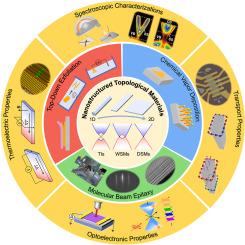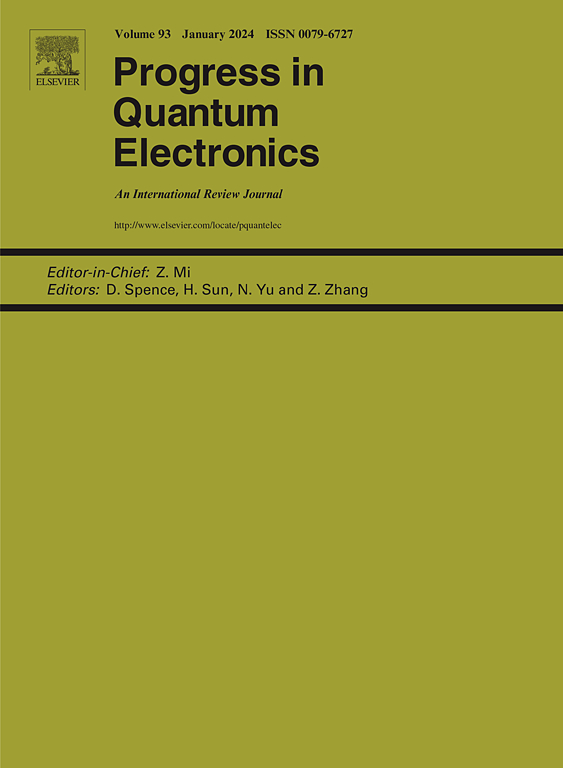Synthesis and characterization of nanostructured topological materials
IF 12.5
1区 物理与天体物理
Q1 ENGINEERING, ELECTRICAL & ELECTRONIC
引用次数: 0
Abstract
As a branch of quantum materials, topological materials are noted for their topologically nontrivial band structures, massless Dirac or Weyl fermions, strong spin-orbit coupling, and boundary-protected states, endowed with exotic physical properties totally different from those of conventional insulators and metals. In this era of information intelligence, topological materials with unconventional properties have drawn increasing attention, with the growing demand for high-performance electronics, spintronics, optoelectronics, thermoelectrics, etc. Besides, compared to bulk forms, nanostructured topological materials are more compatible with electronic and optoelectronic applications in terms of device integration and fabrication. They also possess enhanced contributions from surface/edge states and geometry-regulated band structures. Therefore, there is a demand for manufacturing and studying nanostructured topological materials. With this motivation, recently there have been burgeoning explorations of nanostructured topological materials. In this review, we systematically summarize the exciting proceedings in both synthesis and characterizations of nanostructured topological materials. We start from the introduction of state-of-the-art synthesis methods, as well as their capability of structural control, feasibility, and potential for scaling up. Then, we summarize the characterization tools and the corresponding properties of nanostructured topological materials, in which the origins of these topologically-related physical properties and their nanostructure dependences are elaborated. Perspectives on the challenges and opportunities are also given in the final part to summarize the advances and propose possible directions in the field of nanostructured topological materials.

纳米结构拓扑材料的合成与表征
拓扑材料作为量子材料的一个分支,以其拓扑非平凡带结构、无质量狄拉克或Weyl费米子、强自旋轨道耦合和边界保护态而著称,具有完全不同于传统绝缘体和金属的奇异物理性质。在信息智能时代,随着高性能电子、自旋电子、光电子、热电等领域的需求日益增长,具有非常规性能的拓扑材料越来越受到人们的关注。此外,与体块材料相比,纳米结构拓扑材料在器件集成和制造方面更适合电子和光电子应用。它们还具有表面/边缘状态和几何调节能带结构的增强贡献。因此,对纳米结构拓扑材料的制造和研究有着迫切的需求。基于这一动机,近年来对纳米结构拓扑材料的探索蓬勃发展。在这篇综述中,我们系统地总结了纳米结构拓扑材料的合成和表征方面令人兴奋的进展。我们从介绍最先进的合成方法,以及它们的结构控制能力、可行性和扩大规模的潜力开始。然后,我们总结了表征工具和纳米结构拓扑材料的相应性质,其中阐述了这些拓扑相关物理性质的起源及其对纳米结构的依赖性。最后对纳米结构拓扑材料领域的挑战和机遇进行了展望,总结了纳米结构拓扑材料领域的研究进展,并提出了可能的发展方向。
本文章由计算机程序翻译,如有差异,请以英文原文为准。
求助全文
约1分钟内获得全文
求助全文
来源期刊

Progress in Quantum Electronics
工程技术-工程:电子与电气
CiteScore
18.50
自引率
0.00%
发文量
23
审稿时长
150 days
期刊介绍:
Progress in Quantum Electronics, established in 1969, is an esteemed international review journal dedicated to sharing cutting-edge topics in quantum electronics and its applications. The journal disseminates papers covering theoretical and experimental aspects of contemporary research, including advances in physics, technology, and engineering relevant to quantum electronics. It also encourages interdisciplinary research, welcoming papers that contribute new knowledge in areas such as bio and nano-related work.
 求助内容:
求助内容: 应助结果提醒方式:
应助结果提醒方式:


